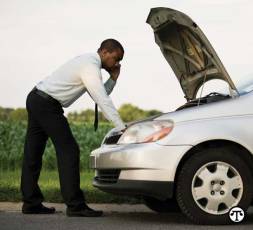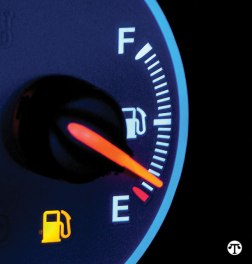Here’s some good info for keeping summer safe and fun.
 (NAPSI)—Fun activities such as barbecues and road trips with family and friends can be more joyful if you heed a few helpful tips to keep yourself safe.
(NAPSI)—Fun activities such as barbecues and road trips with family and friends can be more joyful if you heed a few helpful tips to keep yourself safe.
“Families across the nation will enjoy lots of opportunities to have outdoor fun and occasions to visit family and exciting destinations this summer,” says Paul Quinn, assistant vice president for Farmers Insurance. “Whatever their plans, staying safe, whether at home or on the road, will help keep the experiences and memories happy ones.”
For those planning to hit the road:
• Check belts, fluids and brakes—Before leaving your garage or driveway, be sure to check all the belts for wear and tear. These belts are crucial components of your vehicle, controlling your air-conditioning compressor, power steering pump, alternator and water pump. It is also important to make sure to check your vehicle’s fluids. These include coolant, oil and even the windshield washer fluid; you don’t want to be empty when you go through a swarm of bugs on the highway. Replacing any worn belts and replenishing fluids will help improve your chances of reaching your destination without unexpected problems. Also, make sure to check your car’s brakes as they are one of the most essential safety mechanisms on your vehicle. Grinding, pulling, brake dust and squeaking are just a few signs that your brakes and brake pads may need to be checked or replaced.
• Share the driving—You don’t have to do all the driving yourself. In fact, you may be lucky enough to be traveling with an eager teenager with a valid permit. Letting them drive along the open highway could be a great opportunity for adults to observe their driving habits firsthand and provide immediate feedback, if warranted. It could also be a great confidence builder for nervous teens. Remember that when it’s your turn to drive, they are observing you, so be a good mentor.
• Avoid potholes—No one likes driving over potholes, yet it happens quite often. Frequently, we notice them too late because we are driving close to the vehicle ahead of us. Leaving a bit more space between your car and the one ahead will help avoid those uncomfortable hops and bounces while keeping yourself and your passengers safe. If you hit a significantly large pothole, make sure to get your vehicle’s alignment checked as it can negatively affect steering and suspension.
• In case of a roadside emergency—Sometimes, in spite of all the planning and preparation, something will happen to cause you to pull to the side of the road. Whether it’s a flat tire or a flashing check engine light, getting off the road safely is just the first step. Once you’re off the road, make sure others know you’re not there just to take a nap—use your hazard lights, flares and other roadside indicators to alert other drivers you may need assistance. Lifting the hood of your car, whether there’s trouble with your engine or not, is a good idea to help gain attention from fellow motorists or roadside assistance technicians. A few important items to have in the car include, but are not limited to, a first aid kit, fire extinguisher, extra water and food, and a properly inflated spare tire.
Keeping safe at home:
• BBQs and other outdoor flames—Whether it’s the backyard BBQ or citronella candles to keep pesky bugs at bay, summer and controlled flames seem to go hand in hand. Yet few homeowners can remember where their fire extinguishers are or whether they are still in good working condition. Make it a habit to pull out the fire extinguisher every time you barbecue. If you still don’t have one, be sure to get one right away. It is recommended that fire extinguishers be checked at least once a month and undergo maintenance by a professional once a year.
• Prepare for severe weather—While we all look forward to enjoying summer weather, severe patterns can still arise during warmer weather months. Tornadoes, hurricanes, strong winds and flooding often occur during this time. It’s important to prepare now, in case these natural occurrences happen to you. Be sure to restock your emergency kit with fresh supplies (or start one if you don’t have one). Know where to go in an emergency—basement, storm shelter and so on. Before a storm hits, be sure to bring in or secure anything you keep outside; lawn chairs or umbrellas can become projectiles against your home.
• Take care of the “honey-dos”—There are always home projects, big and small, that need attention. An important outdoor project is to clean the rain gutters. Not only will it help during summer rains, it will also prevent any stray embers from igniting decaying foliage in your gutters. A helpful indoor project is to replace the hoses connected to your washing machine. Every year, thousands of hoses burst unexpectedly, cause for an unhappy family disruption. You can avoid these types of situations by proactively attending to household needs and upkeep.
As a national insurer that believes in helping consumers get smarter about insurance and risk management, Farmers wants consumers across the country to know there are many things they can do to keep their family and friends safe throughout the summer season. Additional tips and consumer-friendly insights are available at www.farmers.com/ inner-circle.
For more information about Farmers, visit www.farmers.com orwww.Facebook.com/FarmersInsurance.
 Car maintenance is what will save you money in the long run and provide you a vehicle that will get you where you need to go.
Car maintenance is what will save you money in the long run and provide you a vehicle that will get you where you need to go.

 (NAPSI)—Fun activities such as barbecues and road trips with family and friends can be more joyful if you heed a few helpful tips to keep yourself safe.
(NAPSI)—Fun activities such as barbecues and road trips with family and friends can be more joyful if you heed a few helpful tips to keep yourself safe. (NAPSI)—Road accidents caused by distracted or speeding drivers are a huge risk for the more than 135,000 men and women of the waste and recycling industry who are out in force each day keeping our communities clean and healthy-but you can be part of the solution.
(NAPSI)—Road accidents caused by distracted or speeding drivers are a huge risk for the more than 135,000 men and women of the waste and recycling industry who are out in force each day keeping our communities clean and healthy-but you can be part of the solution. (NAPSI)—The most enduring memory of the winter of 2014 just might be the millions of potholes that continue to dish out punishment to drivers and passengers across the U.S. and Canada. But abominable road conditions can cause more than just a bone-rattling ride; they can also damage important steering and suspension components, including shock absorbers and struts.
(NAPSI)—The most enduring memory of the winter of 2014 just might be the millions of potholes that continue to dish out punishment to drivers and passengers across the U.S. and Canada. But abominable road conditions can cause more than just a bone-rattling ride; they can also damage important steering and suspension components, including shock absorbers and struts. (NAPSI)—The next time you’re thinking of buying a used car, remember, what you don’t see can hurt you.
(NAPSI)—The next time you’re thinking of buying a used car, remember, what you don’t see can hurt you.
 (NAPSI)—Whenever you hit the road, it’s your car’s tires that hit it first, so it’s important they be in good shape.
(NAPSI)—Whenever you hit the road, it’s your car’s tires that hit it first, so it’s important they be in good shape.
